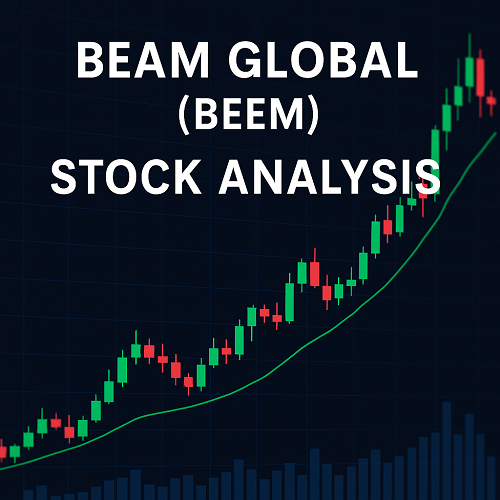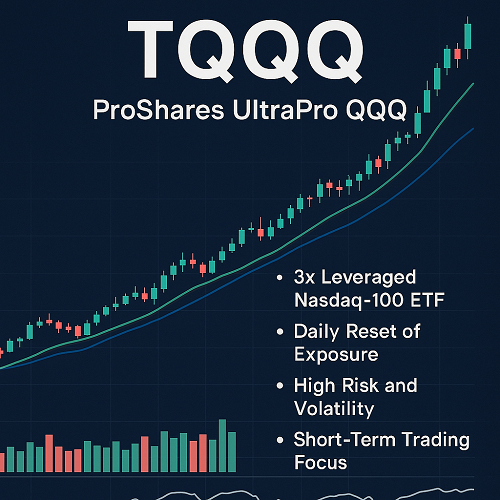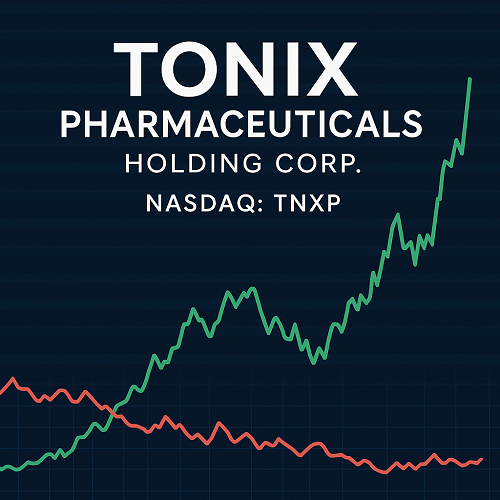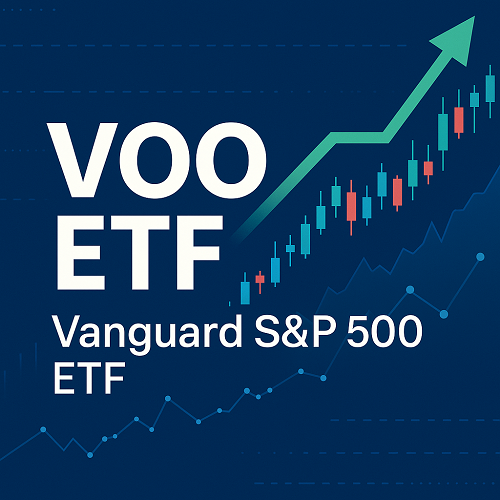Beam Global (BEEM) is a small-cap cleantech company headquartered in San Diego, California, with a focus on renewable-energised infrastructure solutions for electric vehicle (EV) charging, energy storage, energy security and smart-city / outdoor media applications.
Given the global push toward electric mobility, infrastructure build-out, grid resilience and sustainability, Beam Global is positioned in a high-growth thematic. However, the company is still early-stage financially, with losses and limited scale to date. The risk/reward profile is skewed toward a speculative investment: high upside potential if execution and market adoption align, but significant risk if the company fails to scale or faces competitive headwinds.
This article will walk through the business, the addressable market, product set, financials, risks, valuation and provide an investment thesis for BEEM.
Company Overview & Business Model
Corporate History & Overview
Beam Global was formerly known as Envision Solar International, Inc. and changed its name in September 2020.Founded in 2006 and headquartered at 5660 Eastgate Drive, San Diego, CA.
Company description:
“Beam Global, a clean-technology innovation company, engages in the design, development, engineering, manufacture, and sale of renewably energized infrastructure products and battery solutions.”
The workforce is modest—around ~245 full-time employees according to several sources.
Business Model
Beam generates revenue by designing, manufacturing and selling infrastructure assets that combine renewable generation (solar/wind), battery storage and EV charging or outdoor media functions. According to its profile, the company offers products such as EV ARC, Solar Tree, EV ARC DCFC, etc.
Key components of its model:
- Hardware sales: the physical units (solar canopies, charging stations, storage modules).
- Installation / integration: deployment of the infrastructure at sites (parking lots, public transit, fleet charging).
- Service / maintenance: ongoing servicing of the deployed units (though the scale of recurring revenue appears limited currently).
- Target verticals: EV charging networks, public transit fleets, heavy-duty vehicles, e-mobility (including drones), outdoor media installations, smart city infrastructure (street-lighting plus curbside charging) and energy resiliency solutions.
Global Footprint
Beam Global lists facilities in the U.S., Romania (Belgrade & Kraljevo) and Abu Dhabi, UAE, indicating both manufacturing/engineering and international expansion intent.
Industry Context & Market Opportunity
EV Charging & Infrastructure Growth
The global electric vehicle charging market is forecast to grow significantly over the next decade as EV penetration climbs, fleets electrify, governments subsidize charging infrastructure, and fast-charging requirements increase. Beam is positioned in this thematic.
Renewable-Energy + Storage + Smart Infrastructure Convergence
Beam’s value proposition lies in combining renewable energy generation (e.g., solar canopies), battery storage and charging/integration services. This “all in one” model is increasingly relevant in markets where grid-connectivity is limited or where resiliency (e.g., disaster preparedness) is valued.
Smart Cities, Outdoor Media & Energy Security
Beyond EV charging, Beam addresses ancillary themes: streetlight foundations converted to curb-side charging (EV-Standard concept), UAV charging infrastructure, outdoor media/branding via solar installations. These diversified end-markets provide optionality.
Competitive Environment
The space is crowded: numerous players in EV charging hardware, software, and infrastructure (from large incumbents to niche players). Beam’s competitive edge must be clearly articulated (patents, unique product forms, turnkey solutions) to justify investment interest.
Products & Technology Portfolio
Flagship Products
Some key products for Beam Global:
- EV ARC (Electric Vehicle Autonomous Renewable Charger): A self-contained solar + battery unit that mounts EV charging stations and supplies power from renewables + storage.
- Solar Tree DCFC (Direct Current Fast Charge): Off-grid, single-column smart generation + storage system delivering ~150 kW fast charge to EVs (including heavy-duty or fleet vehicles).
- EV ARC DCFC: DC fast-charging system for EVs.
- EV-Standard: Leveraging an existing streetlight foundation + a combination of solar, wind, grid hookup and onboard battery to provide curbside charging.
- UAV ARC: Off-grid renewable energized charging infrastructure for aerial drone (UAV) fleets.
Intellectual Property & Differentiation
Beam emphasizes its product differentiation: the ability to deploy charging/station infrastructure without relying solely on grid connection (important for remote sites). The integration of solar + battery + charging makes them unique in some respects.
Target Use Cases & Vertical Focus
- Public parking lots, malls, airports.
- Service fleets, transit buses, heavy-duty vehicles (construction, agriculture) requiring high-power charging.
- Smart-city installations: streetlight redesigns providing EV-charging plus renewable generation.
- Energy-security/disaster-resiliency installations: ability to continue operating off-grid or during grid outages.
- Outdoor media/branding: deploying solar canopies bearing advertising/branding surfaces, combining utility + monetization.
Growth & Expansion Drivers
- Government incentives in the U.S. (IRA, infrastructure bills) and abroad for EV infrastructure + renewable energy.
- Fleet electrification trend (both passenger and heavy duty).
- Need for off-grid or poor-grid sites (remote work sites, construction sites, etc.).
- International expansion (Middle East, Europe) where grid constraints or faster infrastructure build may favour modular solutions.
Financial Profile & Key Metrics
Revenue & Profitability
According to sources:
- FT notes revenue (TTM) approx. USD 33.36 million and net income of –USD 23.13 million.
- GlobalData lists revenue for 2023 at approx. USD 49.3 million (down ~26.8% vs prior year).
- The company remains unprofitable with negative margins and a modest scale.
Balance Sheet & Financial Health
Key points:
- Limited debt (some sources show debt/equity ~0.01).
- Low market capitalisation: as of recent data, market cap ~USD tens of millions (one source: $53.8M).
- High volatility: one-year return negative ~-38.6% (for BEEM) per FT.
Valuation Metrics
- Price to Book ~1.45 per Barchart data.
- Price to Sales ~0.90 per Barchart.
- Negative earnings: no meaningful P/E (negative EPS).
Recent Performance & News Highlights
- An earlier report: Q4 revenue jump to $20m and full-year revenue $67.4m (+206% year-over-year) in 2024; though earnings still negative.
- Q1 of 2024 revenue of $14.6m (+ from $13m prior year) but missed expectations and triggered a share drop ~10%.
Summary of Financial State
In short: small revenue base, growing but uneven, negative profitability, high risk. On the positive side, modest debt, high optionality if scaling works, association with high-growth infrastructure themes (EV + renewables).
SWOT Analysis
Strengths
- Unique product proposition: modular renewable-plus-storage EV-charging infrastructure that can operate off-grid or in constrained grid settings.
- Presence in multiple high-growth thematic areas: EV charging infrastructure, renewable energy, smart city applications, energy-resiliency.
- Global footprint (U.S., Europe, Middle East) giving international exposure.
- Relatively low leverage (less debt burden) gives flexibility.
Weaknesses
- Very small scale and limited revenue base compared to many infrastructure/EV infrastructure peers.
- Negative profitability and no immediate visibility of strong margin improvement.
- Highly speculative: success relies on execution, market adoption, and scaling manufacturing/installation.
- Competitive pressure: large incumbents and many startups vying for the same markets.
Opportunities
- Infrastructure spending (U.S. Inflation Reduction Act, Bipartisan Infrastructure Law) could provide contracts/market for EV charging infrastructure.
- Fleet electrification (transit, heavy duty) may accelerate demand for fast-charging and off-grid solutions (a sweet spot for Beam).
- Smart-city programmes globally (curbside charging, streetlight-based charging) could open new verticals.
- International expansion in emerging markets (Middle East, Europe) where grid constraints/new infrastructure build give advantage to modular solutions.
- Potential strategic partnerships/acquisitions to accelerate scale or open new markets.
Threats
- Execution risk: manufacturing, installations, supply-chain constraints, margin pressures.
- Market risk: macro slowdown in EV infrastructure investment, delays in policy incentives, or subsidy reductions.
- Competitive risk: larger players may undercut, offer integrated solutions, or dominate key contracts.
- Dilution risk: with small market cap and negative earnings, chance of equity issuance and share dilution is real.
- Technology risk: battery storage/charging technology evolves rapidly and may render some of Beam’s solutions less competitive.
Valuation, Risks and Catalysts
Valuation Outlook
Given the negative earnings and small scale, standard valuation multiples (P/E) don’t apply. Investors must look at forward revenue growth, backlog/contracts, market adoption and path to positive free cash flow. Key valuation levers include:
- Growth rate of revenue and margin expansion.
- Contract backlog and pipeline conversion (Beam’s website mentions pipeline & backlog metrics).
- Risk of dilution and ability to fund growth without excessive dilution.
- Market size and Beam’s ability to capture a meaningful share.
For a speculative infrastructure growth stock like BEEM, a “venture-style” valuation applies: low current value, high optionality, high risk. If Beam can hit a revenue base of $100m+ and turn profitable, valuation could leap; if not, downside remains steep.
Key Risks
- Scaling risk: manufacturing and deployment ramp may be slower than expected.
- Dependence on incentives: government and fleet spending critical; any slowdown hurts growth.
- Dilution risk: future financings may dilute current shareholders.
- Competitive risk: larger players or alternate technologies may take share.
- Cash-flow risk: persistent losses could force restructuring or exit.
Catalysts to Watch
- Signing of large fleet or municipal contracts for EV charging or energy-resiliency.
- International expansion deals (e.g., Middle East or Europe) that demonstrate global scalability.
- Positive margin improvement or positive free-cash-flow quarter.
- Strategic partnerships (with OEMs, charging network operators, utilities).
- Favorable policy changes/incentives (e.g., additional EV charging infrastructure subsidies).
- Manufacturing cost reductions and supply–chain optimisation.
Investment Thesis & Strategy
Bull Case
If Beam Global executes on its product roadmap, wins meaningful contracts and scales installations significantly, it could benefit from the convergence of EV infrastructure + renewable energy + smart-city development. In that scenario, BEEM is a small “pure-play” on these themes with high upside. A relatively small revenue base today means room for growth. If it can reach even mid-hundreds of millions in revenue and begin generating profits, the multiple expansion could be substantial.
Bear Case
However, if growth stalls, contracts don’t convert, manufacturing scale remains constrained, or competition squeezes margins – then the investment could disappoint. Given the small market cap and high risk profile, downside loss is quite possible. Specifically, failure to hit milestone results may result in dilution and share-price erosion.
Investment Strategy
For investors considering BEEM:
- Treat as a high-risk, high-reward speculative investment – not a stable dividend or blue-chip.
- Limit position size relative to portfolio given the risk.
- Monitor key indicators: contract wins/backlog, revenue growth, margin improvement, cash-burn rate and dilution risk.
- Consider setting target entry price based on risk tolerance; given market cap and volatility, wait for favorable news (large contract win, positive earnings surprise).
- Time-horizon: medium to long term (2-5 years), giving time for scale-up.
- Complement with portfolio diversification – don’t rely solely on BEEM to deliver expected returns.
Keyword-Optimized Statement for SEO
“Beam Global (BEEM) stock offers a unique bet in the EV charging and renewable infrastructure space. With its solar-plus-battery charging systems, smart-city-ready hardware, and global expansion plans, BEEM stands out – but investors must weigh the execution risk, small scale and competitive pressures when assessing whether Beam Global is a compelling investment for the next phase of EV infrastructure growth.”
Conclusion
Beam Global occupies an interesting niche at the intersection of EV charging, renewable energy and smart infrastructure. For investors bullish on EV and infrastructure build-out, BEEM provides a way to play that theme via a small-cap company with unique product offerings. That said, the current financial state – limited revenue, ongoing losses, small scale – means the risk is significant. The investment hinges on Beam’s ability to execute, win contracts, scale manufacturing and improve margins.
In summary: if you believe the EV infrastructure build-out is going to accelerate, and Beam Global can scale accordingly, BEEM offers upside. If not, the stock could struggle or decline further. Ownership of BEEM should thus be contingent on a speculative tolerance and active monitoring of execution milestones.
Key Metrics at a Glance
| Metric | Value / Status | Notes |
|---|---|---|
| Revenue (TTM) | ~USD 33.4 million | Small scale |
| Most recent annual revenue | USD 49.3 million (2023) | Decline vs prior year |
| Net income | Negative (~-USD 23.1 m) | Unprofitable |
| Price to Book | ~1.45 | Modest valuation for growth company |
| Debt/Equity | ~0.01 | Low debt, favourable |
| Market Cap | ~USD 50-60 million range | Small-cap, high risk |
| Product Breadth | EV charging, energy storage, smart-city infrastructure | Diversified within cleantech |
| Key Risks | Execution, scale, competition, dilution | High risk |
| Key Catalysts | Large contracts, scale-up, favourable policy | Upside potential |
Frequently Asked Questions (FAQs)
Q1: What is Beam Global’s ticker and exchange?
A1: The ticker is BEEM, listed on the NASDAQ.
Q2: What does Beam Global actually do?
A2: The company designs, engineers, manufactures and sells renewable-energy-enabled infrastructure products: solar canopies, battery storage systems, EV charging units, off-grid fast-charging solutions, smart city lighting solutions and outdoor media installations.
Q3: Is Beam Global profitable?
A3: Not yet. The company is unprofitable, with negative net income and modest revenue base.
Q4: Why is Beam Global interesting from an investment perspective?
A4: Because it participates in the high-growth thematic of EV charging infrastructure + renewable energy + smart-cities. If it can scale, it may benefit from tailwinds.
Q5: What are the biggest risks?
A5: Execution risk (scaling manufacturing, adoption), competitive pressure, dependence on government incentives, dilution risk, and the possibility that growth may stall.
Q6: What should I watch for if investing?
A6: New large contract wins or backlog disclosures, revenue growth trends, margin improvement, evidence of scale and manufacturing ramp, announcements of strategic partnerships, and cash-burn/financing updates.





 XAUT-USD
XAUT-USD  AMD
AMD  MARA
MARA  SHOP
SHOP  BULL
BULL  CL=F
CL=F